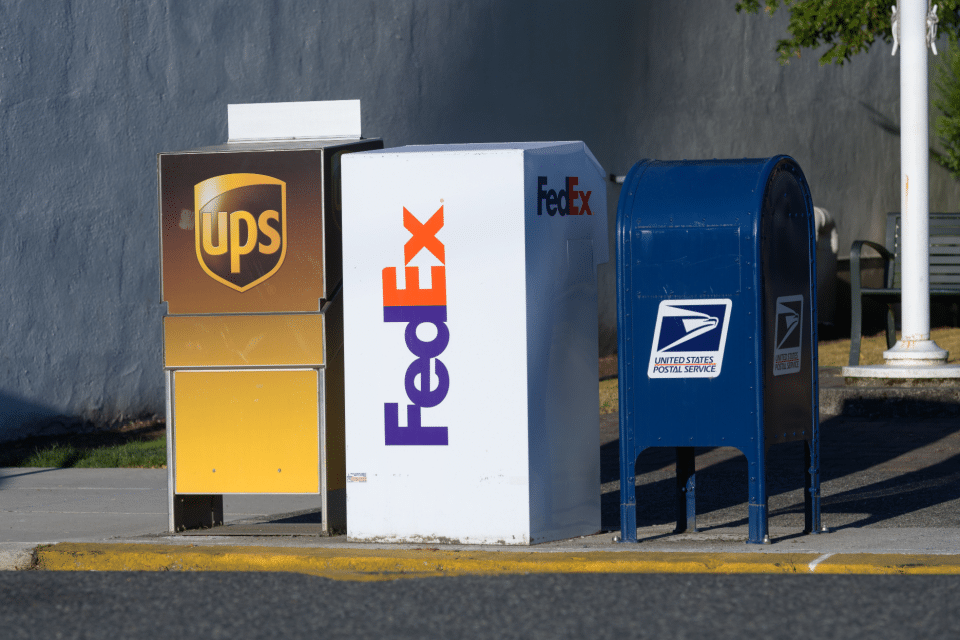How to Reduce Shipping Costs While Maintaining Quality Standards

Shipping is one of a brand’s biggest expenses, especially as customer expectations for fast, low-cost delivery continue to rise. Many companies face a familiar challenge: how to reduce shipping costs without compromising the quality of the customer experience.
While there’s often a perceived tradeoff between cost and speed, the two don’t have to be mutually exclusive. With the right strategy, brands can strike a balance between cost efficiency, delivery speed, and service quality.
In this context, quality refers to more than just the product, it means a positive customer experience. Customers expect their orders to arrive on time, intact, and with clear tracking updates throughout the process. A well-executed shipping strategy preserves these expectations while minimizing unnecessary spend.
The following strategies show how brands can reduce shipping costs without sacrificing the speed, reliability, or experience that today’s customers demand.
8 Ways to Decrease Shipping Costs
Looking to find out how to decrease shipping costs without hurting customer experience? These eight strategies help brands cut spend while preserving speed and visibility, without compromising the customer experience.
Use Multiple Fulfillment Centers
Shipping from multiple locations across the country reduces the distance packages need to travel, lowering costs through a method known as zone skipping. While managing inventory across several sites can add complexity, the savings from shorter transit distances often outweigh the added operational expenses.
Accurate inventory management is key. With the right visibility tools, you can maintain just enough stock at each location to meet demand without tying up cash in excess inventory. A multi-node fulfillment network also shortens transit time and reduces the overall order cycle, which improves customer satisfaction.
Read more on adding fulfillment locations ›
Rate Shopping
Rate shopping can significantly lower your shipping spend while maintaining service quality. With access to multiple carrier options, you can choose services that meet your delivery timeframes at the best possible rates.
Depending on your shipping goals, you may prioritize cost over speed or look for a balance between the two. For example, you might optimize next-day or 2-day service for priority items while choosing 5–7 day shipping for lower urgency orders.
Though managing multiple carriers can be complex, it’s often more cost-effective than relying on a single provider. With the right systems, and support from a logistics partner like FIDELITONE, you can implement a smart rate shopping strategy using direct integrations with both national and regional carriers.
Optimize Packaging
Shipping costs are often determined by either dimensional weight or actual weight, whichever is higher. Dimensional weight is calculated using a formula based on box size and a carrier-specific divisor (e.g., USPS uses 166).
To avoid unnecessary charges, it’s essential to use the smallest possible box that still protects the contents. Leverage a systemic process like Cartonization that can be built into warehouse management systems to analyze order contents and dimensions to recommend the best box size automatically.
Cartonization technology, which uses algorithms to specify the smallest dimensions possible for each order being fulfilled, is one of the solutions FIDELITONE uses to secure the lowest possible shipping costs for order fulfillment clients.
This process not only cuts shipping costs but also improves packing efficiency. Human oversight adds a final check to ensure packaging choices meet quality standards.
See how DIM weight impacts shipping rates ›
Increase Order Size to Offset Shipping Costs
Boosting order size or value helps offset shipping costs through higher overall revenue and increased profitability. One effective approach is to offer product bundles or kits, value packs, or “buy more, save more” deals.
Product bundling and kitting strategies can encourage customers to purchase more in one transaction, which increases revenue per shipment while lowering the cost per item shipped.
Introduce Regional Carriers
Regional parcel carriers like OnTrac or United Delivery Service can be a strategic alternative to larger, well-known global parcel carriers. Regional carriers operate in specific U.S. regions and often offer more competitive rates than national carriers. Their smaller service areas also allow them to provide faster delivery. Additionally, regional carriers have fewer accessorial charges which means a simpler rate structure which is much easier to understand and manage.
Integrating regional carriers into your rate shopping mix gives you more flexibility and can unlock substantial savings especially for high-density delivery zones.
Manage Carrier Relationships
Carrier pricing includes more than just base rates. Fuel surcharges, absolute minimums, and accessorial fees can add up quickly and where significant cost savings can be found. These hidden costs are negotiable, but only if you know where to look.
Ongoing rate negotiations, regular invoice audits, and a deep understanding of contract terms are essential to minimizing waste. Conduct regular invoice auditing…there are often times when there are dollars to recoup.
Effective carrier management requires time, resources and expertise. If you manage multiple carriers, this becomes even more complex and resource intensive. A 3PL like FIDELITONE can manage carrier relationships on your behalf, using scale and experience to help secure favorable rates and identify billing discrepancies.
Analyze Shipping Data Regularly
Without data, it’s nearly impossible to uncover cost-saving opportunities. Ongoing analysis of your shipping and carrier data is critical for identifying trends, pinpointing inefficiencies, and improving performance.
Metrics to monitor include:
- Average cost per package
- Average shipping zone
- Delivery speed
Insights from this data can lead to renegotiated rates, smarter packaging decisions, and even changes to your carrier mix.
FIDELITONE provides powerful shipping analysis from basic parcel reporting to advanced Shipment Level Detail reviews to help brands of all sizes reduce shipping spend while maintaining service levels.
Leverage a 3PL to Reduce Costs
A third-party logistics provider (3PL) brings scale, expertise, and infrastructure that individual brands often can’t match. From access to pre-negotiated carrier rates to advanced systems for rate shopping, packaging, and data analysis, a qualified 3PL can help reduce costs across your entire shipping operation.
A 3PL can also serve as your outsourced transportation team, handling systems, processes, and carrier relationships without the need to build internal capabilities. The key is choosing a partner with the flexibility, technology, and experience to meet your specific needs.
Looking to Reduce Shipping Costs? FIDELITONE Has the Experience to Help
If you’re exploring how to reduce shipping costs without compromising quality, FIDELITONE offers the knowledge and tools to make it happen. Our nationwide network of fulfillment centers, advanced technology for rate shopping and cartonization, in-depth shipping analysis, and our transportation expertise can help your brand lower costs while maintaining excellent service standards.
Contact us today for a free consultation and discover how to reduce shipping costs while maintaining quality and earning customer loyalty.
FIDELITONE helps you earn customers’ loyalty through specialized services in inbound logistics, order fulfillment, last mile delivery and service parts management.



